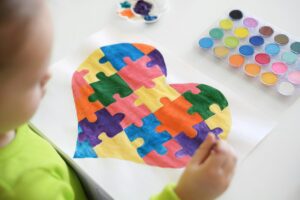Introduction
Dyslexia is a common learning difficulty that primarily affects the skills involved in accurate and fluent word reading and spelling. Characterized by challenges with phonological processing, the disorder can significantly impact a student’s ability to succeed in a traditional learning environment. Recognizing the unique needs of dyslexic students is crucial for developing effective educational strategies that accommodate their learning styles. This article explores various approaches and techniques that can significantly enhance learning for students with dyslexia, aiming to empower them to reach their full academic potential.
Understanding Dyslexia
Dyslexia is often misunderstood as merely a difficulty with reading and writing, but it is a complex neurological condition that impacts the way the brain processes written and spoken language. It is characterized by difficulties with phonological processing, word recognition, and spelling, which are foundational to reading fluency. Dyslexia is not linked to intelligence; rather, dyslexic individuals often exhibit strengths in areas like problem-solving and creative thinking.
Understanding dyslexia involves dispelling myths such as the belief that dyslexics see letters and words backward. Instead, dyslexia primarily affects the ability to decode or break down words into their component sounds, a critical skill for effective reading. This section also explores the neurological basis of dyslexia, highlighting how the brain’s different wiring in dyslexic individuals affects their processing of linguistic information. Awareness and understanding of these factors are crucial for developing effective teaching strategies that can help dyslexic learners succeed academically.
Innovative Teaching Techniques
For students with dyslexia, traditional teaching methods often fall short. To address their unique learning needs, innovative, evidence-based teaching techniques are essential.
Multisensory learning approaches integrate visual, auditory, and kinesthetic-tactile pathways simultaneously to enhance memory and learning of written language. This might involve using letter tiles to build words, tracing letters in sand while saying the sound, or using apps that encourage tapping, swiping, or speaking to promote engagement with phonetics and spelling.
Structured literacy techniques are explicit, systematic approaches to reading that break down the process into manageable components, focusing on phonics, morphology, syntax, and semantics. These techniques are direct and cumulative, ensuring that each skill builds on the last.
Technology and apps also play a crucial role in aiding dyslexic learners. Programs that offer text-to-speech functions, audiobooks, and digital texts with customizable fonts and colors can make reading more accessible. Educational software that reinforces phonemic awareness, vocabulary, and spelling skills can provide the repetitive practice that dyslexic students need to solidify their learning.
By embracing these innovative techniques, educators can create a supportive learning environment that meets the needs of dyslexic students, helping them to unlock their potential and succeed academically.
Classroom Adjustments
Creating an inclusive classroom environment is key for supporting students with dyslexia. Adjustments in classroom settings can significantly enhance their learning experience. These adjustments include:
- Visual Aids: Incorporating charts, graphs, and other visual aids to complement text-based information helps reinforce learning.
- Instructional Pacing: Slowing down the pace of instruction and allowing extra time for reading or completing assignments ensures that dyslexic students fully comprehend the material.
- Alternative Assessment Methods: Rather than relying solely on written tests, educators can use oral presentations, projects, or practical demonstrations as alternative assessment methods.
- Seating Arrangements: Positioning dyslexic students closer to the teacher can help reduce distractions and facilitate easier communication.
- Use of Technology: Allowing the use of text-to-speech software and audiobooks can help dyslexic students access information in formats that are more suitable for their learning styles.
By implementing these practical adjustments, educators can make a significant difference in the academic life of a dyslexic student, enabling a more equitable and effective learning environment.
Support Beyond the Classroom
Support for dyslexic students extends beyond the classroom walls. Parents and caregivers play a crucial role in reinforcing learning at home. Here are some effective strategies to support dyslexic students outside the school environment:
- At-Home Learning Environments: Create a dedicated, quiet space for reading and homework to help minimize distractions.
- Consistent Practice: Regular reading and writing practice at home can help reinforce skills learned at school.
- Use of Technology: Encourage the use of educational apps and tools designed for dyslexic learners, which can make practice more engaging and effective.
- Extracurricular Activities: Engage your child in activities that boost confidence and skills in areas beyond academics, such as art, music, and sports.
Support groups and community resources also provide invaluable networks for parents and caregivers. These groups offer emotional support and practical advice, connecting families with additional resources and shared experiences. By combining school-based strategies with home and community support, parents can create a comprehensive support system that fosters academic success and well-being for their dyslexic child.
Case Studies and Success Stories
Highlighting real-life success stories and case studies can greatly inspire and instruct both educators and parents of dyslexic students. Here are a few examples:
- Case Study of a Multi-sensory Approach: Detailing how a specific school implemented a multi-sensory reading program, leading to remarkable improvements in reading scores among its dyslexic students.
- Personal Success Story: A narrative from a student who overcame severe dyslexia to excel academically and professionally, highlighting the strategies and support systems that made their success possible.
- Innovative School Programs: Showcasing schools that have effectively integrated technology and structured literacy programs into their curriculum, and the positive impact these have had on dyslexic learners.
These stories not only provide evidence of what’s possible but also offer practical models that can be replicated or adapted in various educational settings. They serve as powerful testimonials to the effectiveness of targeted dyslexia strategies and interventions.
Conclusion
Effective educational strategies for dyslexic students are crucial in unlocking their potential and ensuring their success in and out of the classroom. This article has explored various approaches, from innovative teaching methods and classroom adjustments to vital parental support and inspirational success stories. As awareness and understanding of dyslexia continue to grow, so too does our capacity to provide targeted and effective support. For educators, parents, and communities, the commitment to adapting and advocating for these strategies will pave the way for dyslexic students to thrive. By embracing these practices, we can all contribute to a more inclusive and supportive educational landscape.



